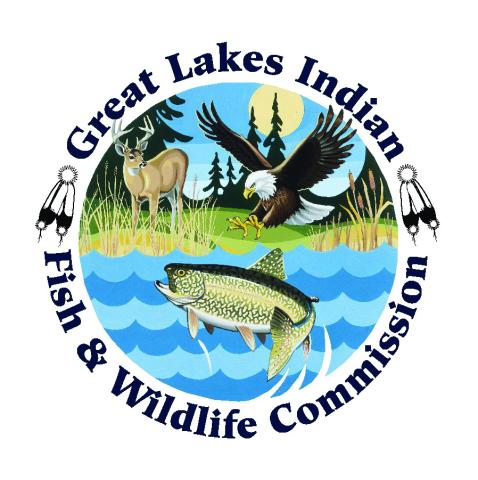
By Michael Waasegiizhig Price, GLIFWC TEK Specialist
In November 2021, the President of the United States issued an Executive Memorandum ordering all federal agencies to integrate Indigenous Traditional Ecological Knowledge (ITEK) into federal decision-making. This memorandum is meant to strengthen relations between federally recognized tribal nations and the federal government, as well as tap into the rich wisdom that Indigenous people possess about the landscape. But what does this really mean? The term, Traditional Ecological Knowledge (TEK), has been around since the mid-1990s. It refers to Indigenous knowledge and wisdom that have existed for thousands of years among Indigenous communities.
A good definition: Traditional Ecological Knowledge (TEK) is a body of localized ancestral knowledge and wisdom about the landscape, passed down through the generations in the form of stories, songs, placenames, and traditions, that have sustained a people for millennia and contributed to their identity as Indigenous people. Knowledge of trees, animals, waterways, and seasons contribute to the ability of a people to subsist and thrive in a particular landscape. But, just as there are diverse landscapes, so are the diverse knowledges of Indigenous peoples. Anishinaabe people are experts on wild rice beds in Minnesota; Lakota people are experts on buffalo rangeland in the Dakotas; the Inuit people are experts on arctic tundra and pack ice. Federal decision-making taps TEK.
In March 1989, the supertanker, Exxon Valdez, hit a reef in Alaska’s Prince William Sound and dumped 10.8 million gallons of crude oil into the waters. Prince William Sound is prime habitat for salmon, seals, sea otters and seabirds, and is also ancestral hunting and fishing territory for the Alutiiq and Sugpiaq peoples. State and federal agencies reached out to the local Indigenous communities for assistance in assessing the damage to wildlife. Residents of the Alutiiq and Sugpiaq communities provided critical pre-spill information about the species composition, population densities, diet and feeding behaviors of all species impacted by the oil spill. This TEK knowledge was invaluable for implementing environmental restoration efforts of the coastal region.
In 2008, The U.S. Fish and Wildlife Service, incorporating local Indigenous knowledge and observations in their analysis, listed the polar bear as a Threatened Species in accordance with the Endangered Species Act (ESA). Members of the Inuit and Chukotka communities in Alaska, namely hunters and fishermen, contributed their knowledge of polar bear habitat, hunting behavior, and population estimates to the study. This knowledge was used, along with scientific data, to determine that sea ice, which is prominent polar bear habitat for seal hunting and birthing their cubs, was significantly diminishing as a result of climate change. The observations of Indigenous hunters and fishermen, along with data collection and analysis, contributed to the ESA listing of polar bears, which afterwards, garnered federal protection.
In 2018, GLIFWC completed the Climate Change Vulnerability Assessment which identifies culturally important beings that may be vulnerable to future climate impacts (GLIFWC often uses the term “beings,” rather than “species,” in reference to plants, animals, and fish as equals to human beings). Local Anishinaabe elders and knowledge-keepers identified 11 animate beings and provided detailed observations that was used in the study. GLIFWC scientists analyzed each being using a statistical vulnerability index model to determine vulnerability. The study revealed that manoomin (wild rice), ogaa (walleye), and waabooz (snowshoe hare) as the most vulnerable beings under different climate model scenarios. Part II of the GLIFWC study will assess more than 60 local beings in the Ceded Territories.
Both science and Indigenous knowledge are valid ways of knowing. The scientific method is an empirical process for gaining knowledge, whereas TEK is a way of life for gaining knowledge. It is true that Indigenous knowledge-keepers may not be familiar with the scientific method, and scientists may not be familiar with Indigenous ways of knowing. Bringing both knowledges and epistemologies (methods of knowing) together may be challenging.
In order for TEK to be effectively integrated with the scientific method, Indigenous knowledge keepers and elders must participate with scientists in the design of research. Insights from Indigenous peoples can assist in making the research questions more culturally relevant. It is important that Indigenous peoples have authority over their knowledge and can deny its usage. This idea comes from a long history of knowledge exploitation by the academy within Indigenous communities. This concept is called Indigenous Data Sovereignty, which is “the inherent right of Native nations to govern the collection, ownership and application of its own data.” (Native Nations Institute).
Indigenous Traditional Ecological Knowledge is not about human beings saving the earth, but rather, it is about us, as human beings, saving ourselves. As Oren Lyons, Faithkeeper of the Onondaga Nation, stated, “Nature has no mercy, only law. If you don’t abide by the law, you suffer the consequences.” I believe that the understanding of natural law comes from the lifeways and wisdom of Indigenous peoples from all over the earth. The integration of Indigenous knowledge and science is a noble effort to preserve and honor our existence on this planet, the Earth Mother of us all.